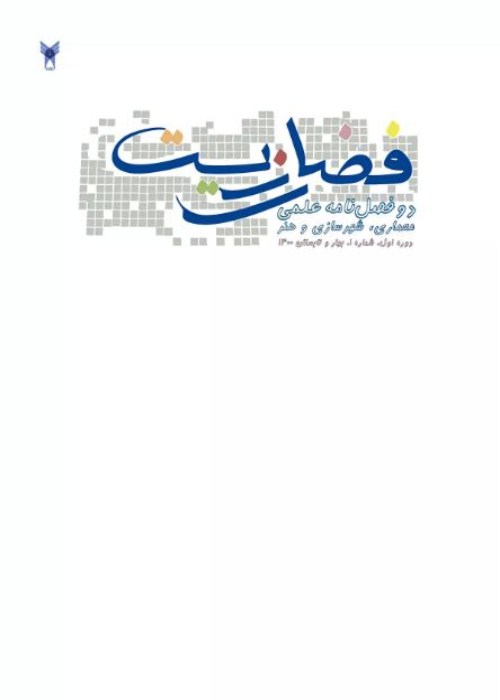Vitality of Residential Complexes Analysis and Evaluation of Functional, Social, Cultural and Environmental Indicators (Case study: Rasht residential complexes)
Today, one of the problems that has plagued architectural and urban spaces is the issue of vitality. Vitality is one of the basic needs of cities that with the development of urbanization and social harms, its importance is increasing day by day. The increasing development of cities, the increase in population and the need for more housing have led to the demolition of houses and their conversion into high-rise buildings and residential complexes. In Iran, along with the growing trend of urbanization, the policy of mass production of housing in the form of housing complexes as one of the ways to respond to housing needs has expanded rapidly. For this reason, in recent decades in Iran, the pattern of housing production has changed and the need to create mass housing has reduced the quality and desirability of designs. The design of today's residential complexes has caused problems for the individual and social life of the residents due to the lack of attention to human needs and the lack of psychological consequences. Among the psychological needs of human beings in urban spaces and residential complexes is the need to live in a lively and high quality environment. Vitality is an urban keyword that speaks of the dynamism and vibrancy of space in various economic, social, physical and cultural dimensions. There is a close relationship between the quality of spaces and environments outside buildings and the activities that take place in them. Since the level of vitality of people is directly related to improving their quality of life, so its very important to address this issue. The main problem in this study is the non-response of the environment to the psychological needs of citizens, which has caused the existing spaces to face dissatisfaction of residents, which causes only places to be built without considering the needs of users whose public spaces do not meet residents' satisfaction. And have created unsafe and unpleasant environments for them. The main question of the research is to what extent the functional, social, cultural and environmental indicators of open and semi-open spaces affect the sense of vitality of the residents of residential complexes. Accordingly, the purpose of this study is to investigate how and to what extent the functional, social, cultural and environmental components of open and semi-open spaces increase the sense of vitality of the residents of residential complexes in Rasht. The research method is combined research (quantitative, qualitative). In the first stage (qualitative method) by studying the research literature and research background, effective factors on life were extracted. At this stage, in order to achieve the desired result and select the most important micro-criteria, the criteria were categorized and compiled in the form of a questionnaire with 5 architects and urban planning specialists (faculty members) to score each of the criteria and select the most important The micro-criteria were surveyed by a closed-ended questionnaire from the lowest (1) to the highest score (5) for each micro-criterion and analyzed by Spss22 software and Friedman ranking test and the most important micro-criteria affecting vitality were extracted. Then, 5 other architects and urban planners were interviewed in the form of a questionnaire. Minority meta-criteria were removed and some common meta-criteria were merged. Finally, the most important components affecting vitality were developed. In the next step (quantitative method), the required data were collected by survey method and through a researcher-made closed-ended questionnaire from the residents of three residential complexes of Pardisan, Cactus and Lakanshahr in Rasht. Residential marked. Sampling was performed using Morgan table. In the next step, with the Pearson test, the correctness of the research hypotheses is analyzed and evaluated. The results of field studies show that there is a significant relationship between the functional, social, cultural and environmental components of this study and the vitality of the residents of the complex. Environmental activity, social activities, recreational activities, attendance, social adjustment, identity, sensory richness, cultural interactions, environmental cleanliness, harmony with nature and comfort. . Finally, according to the research, it is possible to suggest recommendations and solutions in the field of architectural design to improve the vitality of residents in open and semi-open spaces of residential complexes, which is presented in a table in the result section.
- حق عضویت دریافتی صرف حمایت از نشریات عضو و نگهداری، تکمیل و توسعه مگیران میشود.
- پرداخت حق اشتراک و دانلود مقالات اجازه بازنشر آن در سایر رسانههای چاپی و دیجیتال را به کاربر نمیدهد.


